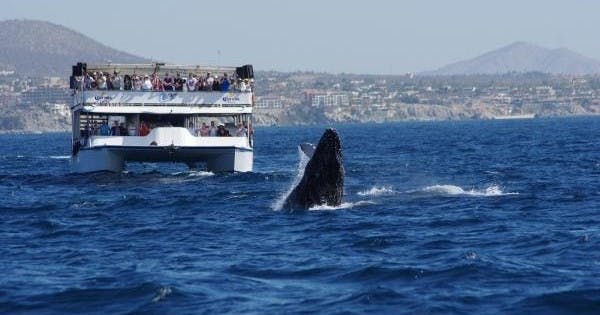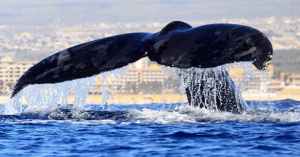Whale watching season in Cabo San Lucas

Nature will always surprise us, to understand it is to love it, to have contact with it is to experience and marvel at our own existence. Whales have arrived in Los Cabos, Baja California for the breeding season of these beautiful mammals. If you want to visit them, we tell you everything you have to know. We tell you how you can do to enjoy whale watching in Los Cabos.
From last December until the month of March, you can see whales in the Sea of Cortez in the Baja California peninsula, Mexico. Various species of whales (the most common gray, blue and humpback) arrive on this side of the world to give birth and care for their young during the winter months. Los Cabos, located in the southern part of the Baja California peninsula, is the most common and popular place to see this impressive spectacle of nature. Here is what you should know about the whale season in Los Cabos.
Whales swim about 12,000 miles from the Arctic to Baja California, Mexico to give birth to their young and care for them in a region that enjoys good weather due to its warm waters. Bahía Magdalena and Laguna San Ignacio are two of the best places from which to see whales.

Gray whales: the friendliest
The gray whales make the longest journey: in the Arctic, they feed on small, cold-water marine animals that prepare them for the journey that awaits them heading south. You can recognize them by their blotchy and rough skin, in addition to the orange lice that live on their heads. Sometimes even gray whales approach boats to be touched and live with humans. This action is known as ‘spyhopping’, which can be translated as ‘spy’.
Whale watching in Cabo: The experience
You feel like the breeze hits your face while you go on the raft, everything seems to be calm, but when you least expect it, a 40-ton whale rises vertically with a great jump out of the water. The guide changes the course of the raft to follow the path of the whales, so you can see how the whales show their great tails and the jump that their whales give, which turns into a whole show…. this is how the whale watching is lived in Los Cabos.
